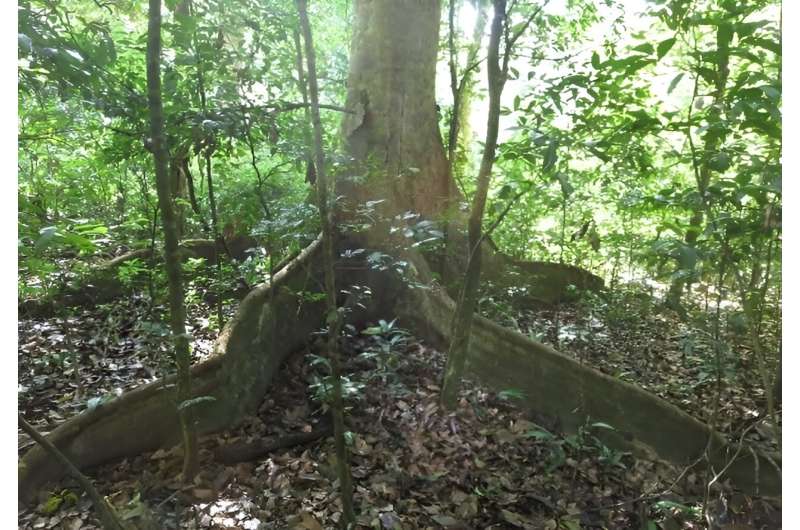Tropical forest resilience to seasonal drought linked to nutrient availability

Tropical forests are highly productive ecosystems, accounting for nearly half of the global forest carbon sink. If tropical forests can no longer remove carbon dioxide from the atmosphere, the effects of climate change may become even more severe.
In recent times, these forests have been found to be increasingly limited in nutrients, which may affect their resilience to seasonal droughts and the rate at which they can remove carbon dioxide from the atmosphere.
To investigate this, an international research team led by the University of G枚ttingen established Africa's first largescale nitrogen-phosphorus-potassium addition experiment in the Budongo Forest of Uganda. Their research showed that increasing the availability of certain nutrients can potentially sustain the productivity of these forests even under intense drought conditions鈥攃onditions already prevalent in most parts of the world. The results were in the journal Nature Geoscience.
The researchers investigated how nutrients control the production of leaf litter onto the forest floor. Plant leaves actively remove human-produced carbon dioxide from the atmosphere when they photosynthesize to make their own food. This process leads to carbon accumulation in the plant's wood or in the leaves themselves. However, under drought conditions most trees respond by shedding their leaves, which reduces the rate of carbon removal from the atmosphere.
Eventually, the whole plant dies if the drought persists for a prolonged period. However, the researchers found in particular that for trees which were deficient in potassium, increasing the availability of this nutrient during the drier period delays the timing when most leaves are lost by four weeks.
To overcome the low potassium levels, the trees had reallocated the potassium from their dying leaves to the rest of the plant before shedding them. Lead author Dr. Raphael Manu from the University of G枚ttingen explains, "That low potassium and phosphorus availability can make this vital tropical forest ecosystem more vulnerable to drought and a less effective carbon sink."
In dry conditions, potassium helps plants to effectively regulate the minute pores in their epidermis, and phosphorus plays an important role in conserving water within the plant. This explains why these two nutrients are so important when conditions become drier in the future.
Professor Edzo Veldkamp from the University of G枚ttingen adds, "This is the first time that we have experimentally linked soil nutrient availability to the seasonal drought response of tropical forests."
More information: Raphael Manu et al, Response of tropical forest productivity to seasonal drought mediated by potassium and phosphorus availability, Nature Geoscience (2024).
Journal information: Nature Geoscience
Provided by University of G枚ttingen





















